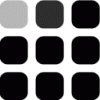About us

Our artwork strives to incorporate both the beauty and intrinsic order that nature provides. Our natural shapes undergo a mathematical process called fractal analysis to ensure they possess the beneficial properties that the research on fractal dimension provides. All of our images have therefore been designed with a mid-range fractal dimensions.
Fractal art usually refers to mathematically generated complex images that are perfectly self similar. This is not what FracArt is about. Our images are not fractal as such, rather; they are based on natural environment and possess the specific fractal dimensions to induce a recalibration of the sense of sight to dampen the body’s response to stress induced by intensive tasks.
FracArt’s intent is to be part of the solution; to chip away at the universal ailment of our time and transition into a brighter outlook. It is not under stress that we will do out best work, connect and learn. It is from a sense of ease and wellness that we can truly contribute.
Integer dimensions such as 1D, 2D or 3D are the basis for important man-made constructs however they fall short when expressing the visual qualities of a shape found in nature. A fractal dimension is a dimension that lives within fractions of the integer dimensions. It was created as an attempt to provide a more useful measure of natural shapes. It can be used to indicate roughness or jaggedness.
So, if a line is a one-dimensional shape, a solid square is a two-dimensional shape, what would a fractal mid-range dimension represent on a page? Well, this is exactly what our team has been able to generate. Shapes with in this fractal dimension range indicate a specific way the shape fills the space.
Shape perception is a very important and mostly unconscious function of daily life. We are constantly scanning our environment and processing visual information to make sense of a world that is built with linear and unnatural shapes. Richard Taylor’s research finds that there are quantifiable benefits to exposing ourselves to images with specific fractal dimension. In his research he finds that images with mid-range fractal dimension are found to induce a state of wakeful relaxation in the brain by providing the eye a break from processing geometrical shapes.
Fractals are the smallest unit of a self similar shape. They can be found in many natural occurring arrangements such as river paths, coastlines, mountain ranges, clouds, waves, vegetables like broccoli, trees, some flowers, froth bubbles and some plants such as ferns. Most of our images cannot be considered true fractals as they do not posses the self-similarity as these shapes however they do present the very relevant midrange fractal dimension.
It is well known fact that we are positively impacted by the exposure to nature. Studies show that incorporating nature images in built environments may improve attention, learning, and cognitive function. By combining the findings of natural shapes and mid-range fractal dimensions we are aim to reap the maximum benefits in these studies.
We are launching our FracArt images as fashion elements with the intention of broadening our scope in the near future. FracArt shirts are not only a statement of individuality. We want to draw attention elements that would otherwise be ignored, and spread ease to all who come in the field of vision of our work.
FracArt is committed to supporting social and environmental causes. Therefore, when people buy our designs, they can choose to support one of the following organisations:
Beyond Blue - an organisation that works to support mental health, including anxiety and depression.
Headspace - an organisation that works to support mental health in younger people.
Save the Koala - an organisation that plants trees to help koalas.
Our project is based on the following studies:
Dockrill, P. (2016) "Just Looking at Photos of Nature Could Be Enough to Lower Your Work Stress Levels". Science Alert, 23 March. Accessed from https://www.sciencealert.com/just-looking-at-photos-of-nature-could-be-enough-to-lower-your-work-stress-levels
Gamble, KR,Howard, JH, Howard, DV (2014)."Not just scenery: Viewing nature pictures improves executive attention in older adults". Exp Aging Res. vol. 40, no. 5 pp. 513–530. Accessed fromhttps://www.ncbi.nlm.nih.gov/pmc/articles/PMC4929355/
Herman Miller,"Nature based design – the new green". Exp Aging Res. vol. 40, no. 5 pp. 513–530. Accessed fromhttps://www.hermanmiller.com/research/categories/white-papers/nature-based-design-the-new-green/
Herman Miller,"Just looking at nature can help your brain work better, study finds",Washington Post, 27 May. Accessed from https://www.washingtonpost.com/news/energy-environment/wp/2015/05/26/viewing-nature-can-help-your-brain-work-better-study-finds/
Simion, MR (2016). "A new way to reduce stress and to improve educational workspaces",Global Journal of Psychology Research, vol. 6, no. 1. pp. 20-30 Accessed fromhttp://www.academia.edu/34193881/Fractal_images_a_new_way_to_reduce_stress_and_to_improve_educational_workspaces
Salingaros, N (2012)."Fractal Art and Architecture Reduce Physiological Stress",Journal of Biourbanism, no. 2. Accessed fromhttps://pdfs.semanticscholar.org/c856/9c59a75f487882f26ecb3920eeaa94ac0b5e.pdf
Taylor, RP, Spehar, B, Wise, JA, Clifford, CWG, Newell, BR, Hagerhall, CM, Purcell, T, Martin, TP (2005)."Perceptual and Physiological Responses to the Visual Complexity of Fractal Patterns",Nonlinear Dynamics, Psychology, and Life Sciences, vol. 9,no. 1. Accessed fromhttps://cpb-us-e1.wpmucdn.com/blogs.uoregon.edu/dist/e/12535/files/2015/12/ResponseNon-linear-28e9hbu.pdf
Taylor, R (2017)"Fractal patterns in nature and art are aesthetically pleasing and stress-reducing"The Conversation, 31 March. Accessed fromhttps://theconversation.com/fractal-patterns-in-nature-and-art-are-aesthetically-pleasing-and-stress-reducing-73255
Vogel, S & Schwabe, L. (2016)."Learning and memory under stress: implications for the classroom",npj Science of Learning, vol. 1. Accessed fromhttps://www.nature.com/articles/npjscilearn201611
Williams, F & Aeon (2017)."Why Fractals Are So Soothing".The Atlantic, 26 January. Accessed fromhttps://www.theatlantic.com/science/archive/2017/01/why-fractals-are-so-soothing/514520/


